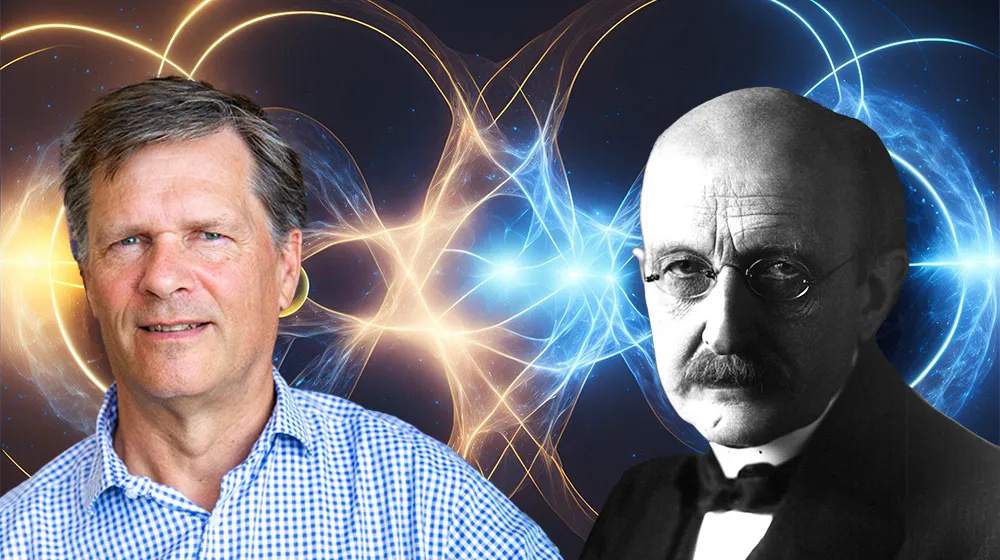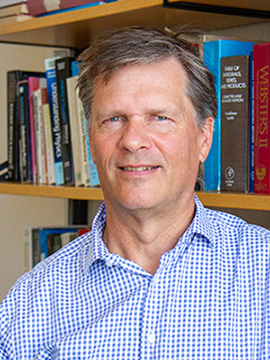Quantum technology – from theoretical physics to revolutionary technology

Quantum technology is a hot topic right now – and we are said to be on the verge of a revolution. But what exactly is it? KTH professor Mats Wallin explains the concepts.
"Quantum technology involves taking quantum physics and applying it to industry and society. This is new, exciting and happening right now," Wallin says.
Governments, universities and private companies are currently investing enormous resources in research and development of quantum technology, with the hope of achieving groundbreaking advances in areas such as quantum computers, communications, health, energy, materials, logistics, finance, defence and more. But fundamentally, everything is based on quantum mechanics, a branch of physics that is hardly new.
“Quantum mechanics emerged in 1900 with Max Planck, who was the first to propose the quantisation of energy,” Wallin says.
This marked the beginning of quantum mechanics, which can be described as a way of explaining the world at the atomic level, beyond what we can observe with our own eyes. Over the following decades, several prominent physicists, including Albert Einstein, Niels Bohr, Louis de Broglie, Erwin Schrödinger and Werner Heisenberg, contributed to the theoretical development of quantum mechanics.
“It took about 20–30 years to understand the consequences of Planck’s proposal, which can be summarised in two main principles,” Wallin says.
The world in its smallest components
One is Heisenberg's uncertainty principle, which states that it is impossible to simultaneously determine the position and momentum of an object with precision when studying the world in its smallest components. The uncertainty principle thus describes when classical physics ceases to function. But a negative principle is not enough, according to Wallin.
– You need to have a positive principle as well, which is called the superposition principle. It states that a quantum mechanical particle can be in several states at the same time. You can then develop a mathematical theory based on all of this. You can study this at KTH, which is highly recommended if you want to know the details!
Mats Wallin explains that we humans have no intuitive understanding of how quantum mechanics works because we perceive that we live in the world of classical physics. That is what we observe. We have a position, and we have a velocity, and if we move, we get a new position and a new velocity. It is rare for us to experience being in two places at the same time.
From physics to technology
Quantum mechanics has led to several technological applications – such as nuclear energy and lasers – but that is not really what is meant when people talk about quantum technology today, according to Mats Wallin.
“Much of the technology used today that was developed in the twentieth century does not fully exploit the advantages of quantum mechanics, and that is what is new.“
The quantum mechanical advantages that Wallin refers to are that quantum mechanical particles can be in several states at the same time. This is what is applied in a quantum computer, where classical ones and zeros are replaced by quantum bits (qubits), but the quantum computer is far from the only application. KTH conducts research in quantum technology in several sub-areas. Quantum communication, which is based on single photons instead of electrical signals. In quantum matter, exotic quantum mechanical states are studied. Early groundbreaking contributions to quantum information theory have been made at KTH.
“We are trying to take the difference between classical physics and quantum physics and use that difference to create new and better technology,” Wallin says.
Why are these breakthroughs only happening now?
“The experimental part is incredibly challenging, so it has required a long period of development of, for example, nanotechnology and low-temperature technology, which are only now in place. So, the theory existed, but we had to wait for the technology to make it possible to experiment,” Wallin says.
Text: Jon Lindhe ( jlindhe@kth.se )

